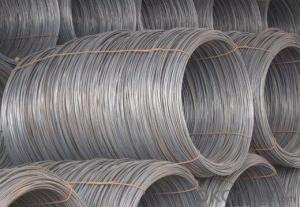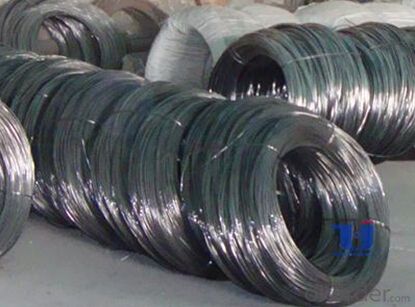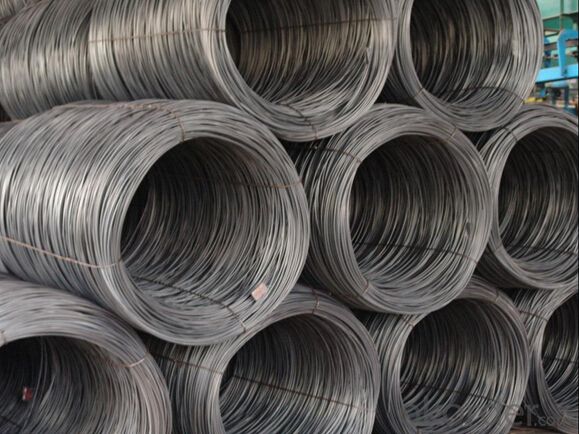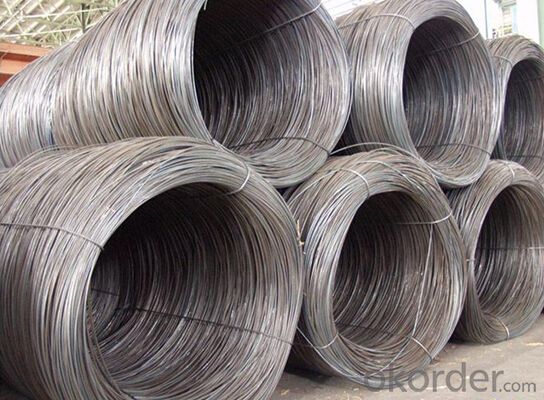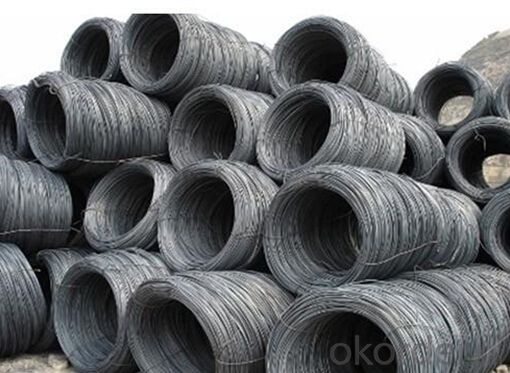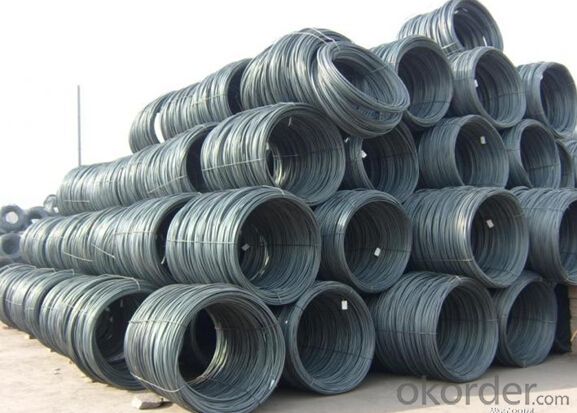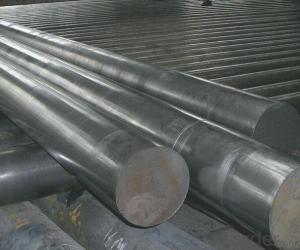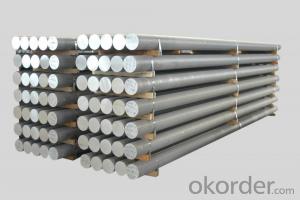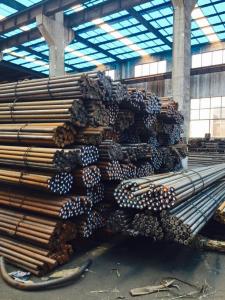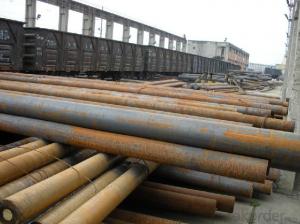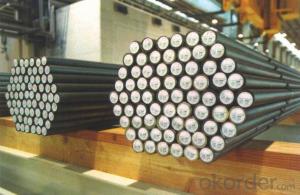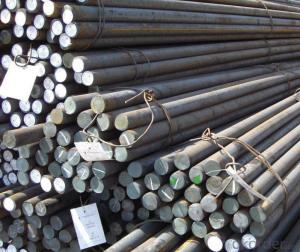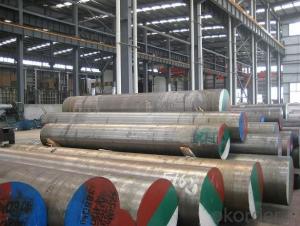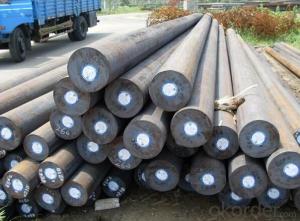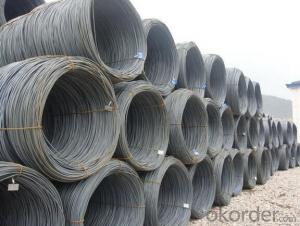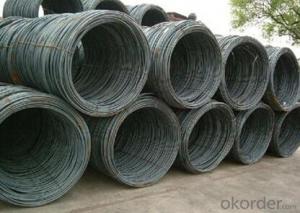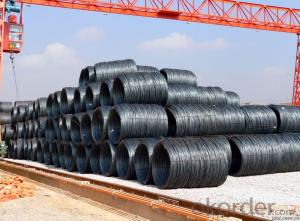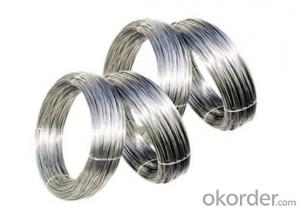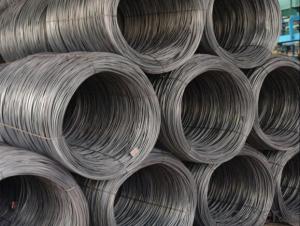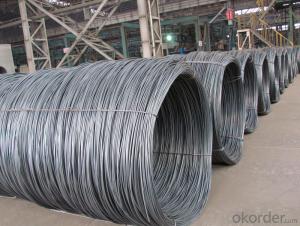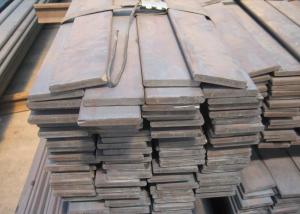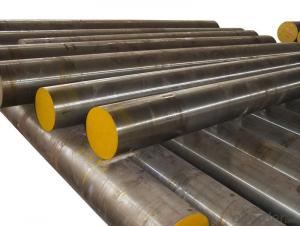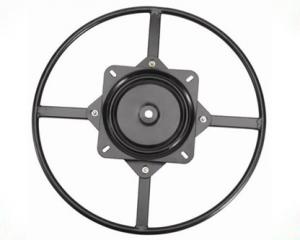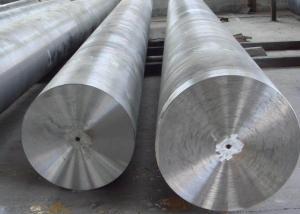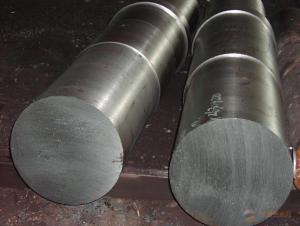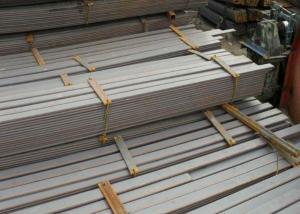Grade SAE 1010 Hot Rolled Steel Wire Rod in Coils
- Loading Port:
- Tianjin
- Payment Terms:
- TT OR LC
- Min Order Qty:
- 3 m.t.
- Supply Capability:
- 10000 m.t./month
OKorder Service Pledge
Quality Product, Order Online Tracking, Timely Delivery
OKorder Financial Service
Credit Rating, Credit Services, Credit Purchasing
You Might Also Like
Specification
Type:
Carbon Steel,Spring Steel,Bearing Steel,Gear Steel,Deformed Steel,Stainless Steel,Alloy Steel
Shape:
Steel Coil,Steel Sheet,Steel Wire Rod,Steel Flat Bar,Steel Square Bar,Steel Angle,Steel Round Bar,Steel Billets
Technique:
Hot Rolled,Cold Rolled,Cold Drawn,ERW,Forged,Saw,Extruded,EFW,Spring
Surface Treatment:
Galvanized,Coated,Copper Coated,Color Coated,Oiled,Dry,Chromed Passivation,Polished,Bright,Black,PVDF Coated
Certification:
ISO,SGS,BV,IBR,RoHS,CE,API,BSI,UL
Thickness:
5.5mm, 6.5mm, 8-14mm
Width:
5.5mm, 6.5mm, 8-14mm
Length:
In coils
Outer Diameter:
5.5mm, 6.5mm, 8-14mm
Net Weight:
2m.t.
Packaging:
Seaworthy packaging
Grade SAE 1010 Hot Rolled Steel Wire Rod in Coils
Detailed Information of the Grade SAE 1010 Hot Rolled Steel Wire Rod in Coils
| Name | Hot Rolled High Carbon Wire Rod |
| Shape | Round Bar/Square Bar/Flat Bar/Plate/Wire |
| Standard | GB/ASTM/SAE/AISI/DIN/JIS/EN/BS |
| Surface Treatment: | Black/Peeling/Polished/Machined |
| Delivery Condition: | Hot Rolled or Forged/Peeled or Black Surface |
| Test | SGS/UT 100% Elements Testing |
| Certificate: | ISO/Mill Certificate |
| Service: | 24 hours online service / |
| more than 20 years trading and manufacture | |
| Quality Assurance: | the third party inspection, such as SGS, BV, TUV…etc. is acceptable |
| Packaging Details: | Seaworthy Packaging or as per customer's packing instruction |
Chemical Composition of the Grade SAE 1010 Hot Rolled Steel Wire Rod in Coils
| Grade | Chemical Composition(%) | |||||
| C | Mn | Si | S | P | B | |
| SAE1010 | 0.1max. | 0.3~0.50 | 0.15max | 0.050max | ≤0.040 | >0.0008 |
| Mechanical properties | ||||||
| Yield strength(N/mm2) | Tensile strength(N/mm2) | Elongation(%) | ||||
| 250-280 | 350-380 | ≥32 | ||||
Company Introduction the Grade SAE 1010 Hot Rolled Steel Wire Rod in Coils
CNBM International Corporation is the most import and export platform of CNBM group(China National Building Material Group Corporation) ,which is a state-owned enterprise, ranked in 270th of Fortune Global 500 in 2015.
With its advantages, CNBM International are mainly concentrate on Cement, Glass, Iron and Steel, Ceramics industries and devotes herself for supplying high quality series of refractories as well as technical consultancies and logistics solution.
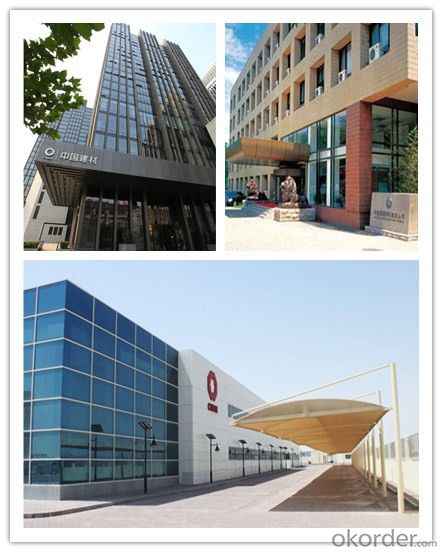
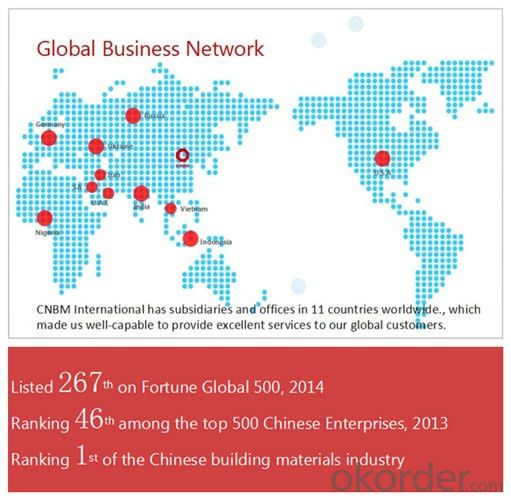
| After-sale service | CNBM provides the services and support you need for every step of our cooperation. We’re the business partners you can trust; you can relax and get on with doing business. |
| For any problem, please kindly contact us at any your convenient time, we’ll reply you in our first priority within 24 hours | |
| Advantages | Industry experience over 20 years. |
| Shipment of goods -More than 70 countries worldwide. | |
| The most convenient transport and prompt delivery. | |
| Competitive price with best service. | |
| High technical production line with top quality products. | |
| High reputation based on best quality products. |
Packaging & Delivery the Grade SAE 1010 Hot Rolled Steel Wire Rod in Coils
| Packaging Detail | Sea worthy packing /as per customer's packing instruction |
| Delivery Detail | 15 ~ 40 days after receiving the deposit |
Products Show
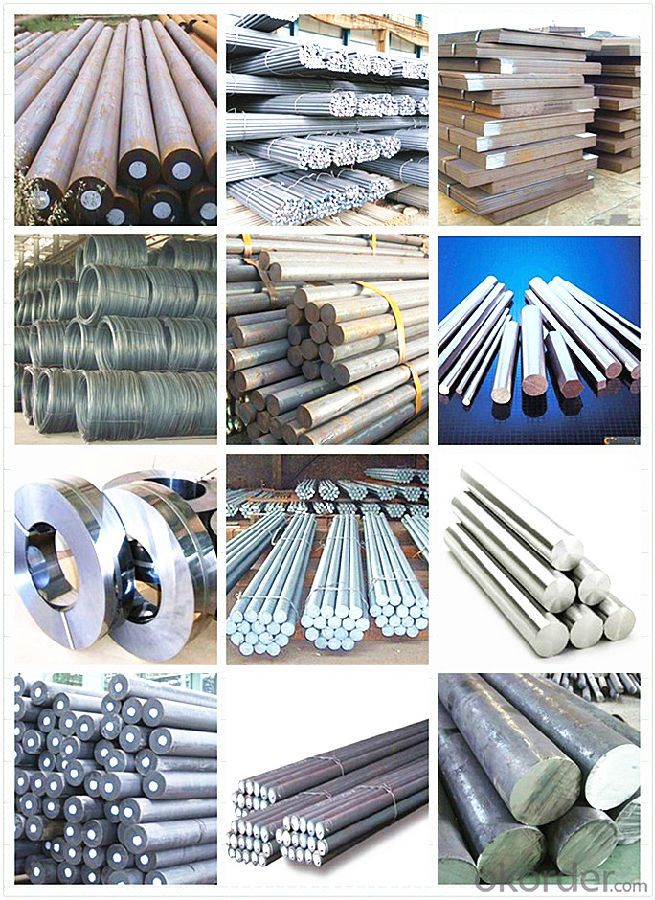
FAQ:
| Are you a trader or manufacturer? | Manufacturer |
| What’s the MOQ? | 3 metric ton |
| What’s your delivery time? | 15-35 days after downpayment received |
| Do you Accept OEM service? | Yes |
| what’s your delivery terms? | FOB/CFR/CIF |
| What's the Payment Terms? | 30% as deposit,70% before shipment by T/T |
| Western Union acceptable for small amount. | |
| L/C acceptable for large amount. | |
| Scrow ,Paybal,Alipay are also ok | |
| Why choose us? | Chose happens because of quality, then price, We can give you both. |
| Additionally, we can also offer professional products inquiry, products knowledge train (for agents), smooth goods delivery, excellent customer solution proposals. | |
| What's your available port of Shipment? | Main Port, China |
| What’s your featured services? | Our service formula: good quality+ good price+ good service=customer's trust |
| Where are your Market? | Covering more than 160 countries in the world |
- Q: How does special steel contribute to the automotive suspension spring industry?
- Special steel plays a crucial role in the automotive suspension spring industry by providing enhanced performance and durability to the springs used in vehicles. Suspension springs are responsible for supporting the weight of the vehicle and absorbing road shocks, ensuring a comfortable and smooth ride for passengers. Special steel, also known as alloy steel, is specifically designed to possess exceptional mechanical properties, such as high strength, toughness, and resistance to wear and fatigue. These properties are essential for suspension springs, as they need to withstand the constant stresses and strains experienced during vehicle operation. The use of special steel in automotive suspension springs allows for the production of springs that are lighter in weight, yet stronger and more reliable compared to traditional steel springs. This results in improved fuel efficiency and reduced vehicle weight, contributing to lower emissions and a more sustainable automotive industry. Furthermore, special steel enables suspension springs to maintain their shape and performance over an extended period, even under extreme conditions. This ensures that the vehicle's suspension system remains effective, providing a comfortable and stable driving experience. In addition, special steel can be tailored to meet specific requirements of different vehicles, allowing for the customization of suspension springs based on factors such as vehicle weight, load capacity, and desired ride quality. This flexibility in material properties enhances the overall performance and safety of the suspension system. Overall, special steel plays a vital role in the automotive suspension spring industry by providing the necessary strength, durability, and performance characteristics required for a reliable and efficient suspension system. Its use contributes to the development of lighter, more fuel-efficient vehicles, while ensuring passenger comfort and safety.
- Q: Can special steel be used in the defense sector?
- Indeed, in the defense sector, special steel finds itself as a viable option. Special steel, which encompasses alloys or compositions designed with specific attributes such as high strength, hardness, resistance to corrosion, or heat resistance, proves to be suitable for a range of defense applications. These applications include the construction of armored vehicles, naval vessels, aircraft, and weaponry. Within the defense sector, special steel serves as a valuable resource for manufacturing components and structures necessitating exceptional strength and durability. For instance, it can be utilized to produce armor plates for tanks and armored vehicles, which must endure high impact and ballistic threats. Additionally, special steel can be employed in the construction of naval vessels, providing corrosion resistance and enhancing overall structural integrity. Furthermore, the defense industry heavily relies on special steel for manufacturing aircraft parts and weaponry. Aircraft components, such as landing gear, engine parts, and structural elements, demand materials of high strength to ensure safe and reliable operation. Special steel alloys fulfill this requirement by providing the necessary strength and resistance to extreme conditions, including high temperatures and pressures, making them an ideal choice for these applications. Moreover, special steel plays a vital role in the production of various types of weapons, such as firearms and blades. Its exceptional strength and hardness properties render it suitable for manufacturing gun barrels, bulletproof vests, and knives employed by military personnel. To summarize, special steel holds significant value within the defense sector due to its exceptional properties, including strength, hardness, corrosion resistance, and heat resistance. Its extensive applications in the construction of armored vehicles, naval vessels, aircraft, and weaponry ensure the safety, durability, and effectiveness of military equipment.
- Q: What are the properties of high-strength tool steel?
- High-strength tool steel possesses excellent hardness, wear resistance, and toughness. It has the ability to retain its sharpness, withstand high temperatures, and resist deformation. This type of steel is also known for its high strength-to-weight ratio, making it ideal for heavy-duty applications in industries such as manufacturing and construction.
- Q: How is special steel used in the chemical industry?
- Special steel is used in the chemical industry for various applications due to its exceptional corrosion resistance, high temperature strength, and durability. It is commonly used to manufacture equipment such as pressure vessels, storage tanks, pipelines, and reactors that handle corrosive substances or operate under extreme conditions. Additionally, special steel alloys are utilized in the production of catalysts, valves, and pumps, ensuring reliable and efficient performance in chemical processes.
- Q: How does special steel contribute to the metalworking industry?
- Special steel contributes to the metalworking industry by offering enhanced properties such as increased strength, durability, and resistance to corrosion or heat. These unique characteristics make it suitable for a wide range of applications, including manufacturing of machinery, tools, and components used in various sectors like automotive, aerospace, construction, and energy. By providing superior performance and reliability, special steel helps improve productivity, efficiency, and safety in metalworking processes, ultimately driving innovation and advancement in the industry.
- Q: How are cobalt-based alloys used in dental applications?
- Cobalt-based alloys are commonly used in dental applications due to their excellent mechanical properties, corrosion resistance, and biocompatibility. They are used in dental prosthetics, such as crowns, bridges, and dentures, as well as in dental implants. These alloys provide high strength and durability, ensuring long-lasting dental restorations. Additionally, their biocompatibility ensures that they do not cause any adverse reactions in the oral environment.
- Q: How does special steel perform in high-speed applications?
- Special steel performs exceptionally well in high-speed applications. Its unique composition and properties, such as high strength, hardness, and toughness, allow it to withstand extreme conditions, including high temperatures, vibrations, and stresses. This ensures reliable performance, minimal wear, and extended service life, making special steel an ideal choice for high-speed applications where precision, durability, and efficiency are critical.
- Q: What are the main applications of special steel in the medical field?
- Special steel is widely used in the medical field for various applications. One of the main applications is in surgical instruments, where special steel alloys provide excellent strength, durability, and corrosion resistance. These alloys are also used in the production of medical implants, such as artificial joints and bone plates, due to their biocompatibility and ability to withstand the demanding conditions inside the human body. Additionally, special steel is utilized in medical devices like needles, catheters, and dental instruments, ensuring precision, hygiene, and reliability in these critical tools.
- Q: What are the different methods of preventing stress corrosion cracking in special steel?
- There are several methods that can be employed to prevent stress corrosion cracking in special steel: 1. Material Selection: Choosing the appropriate steel alloy with enhanced resistance to stress corrosion cracking is crucial. Alloys such as stainless steel, duplex stainless steel, and nickel-based alloys are known for their resistance to this type of corrosion. 2. Surface Treatments: Applying surface treatments like passivation or electroplating can create a protective layer on the steel surface, preventing the entry of corrosive substances and reducing the likelihood of stress corrosion cracking. 3. Stress Relieving: Heat treatment processes like stress relieving can be employed to reduce residual stresses in the steel, which can contribute to stress corrosion cracking. This treatment involves heating the steel to a specific temperature and then slowly cooling it, which helps to minimize the presence of residual stresses. 4. Corrosion Inhibitors: The use of corrosion inhibitors can help to protect the steel from corrosive environments. These inhibitors can be added to the system or applied as a coating on the steel surface, creating a barrier that prevents the corrosive substances from reaching the steel. 5. Environmental Control: Controlling the environment in which the steel is exposed is essential for preventing stress corrosion cracking. Factors such as temperature, humidity, and the presence of corrosive substances should be monitored and controlled to minimize the risk of stress corrosion cracking. 6. Cathodic Protection: Utilizing cathodic protection techniques can help to prevent stress corrosion cracking. This method involves applying a sacrificial or impressed current to the steel, which acts as a cathode and protects the steel from corrosion. 7. Design Considerations: Proper design of the steel structure is crucial in preventing stress corrosion cracking. Factors such as avoiding sharp corners, minimizing stress concentrations, and providing adequate drainage to prevent the accumulation of corrosive substances can significantly reduce the risk of stress corrosion cracking. By employing a combination of these methods, it is possible to effectively prevent stress corrosion cracking in special steel and ensure the longevity and integrity of the structure.
- Q: How does special steel contribute to the strength of structures?
- Special steel contributes to the strength of structures by providing enhanced properties such as high tensile strength, durability, and resistance to corrosion. This type of steel is specifically engineered to withstand heavy loads, extreme conditions, and harsh environments. Its superior strength allows for the construction of structures that can support more weight, withstand greater pressures, and resist deformation. Whether used in buildings, bridges, or machinery, special steel plays a vital role in ensuring the structural integrity and longevity of various constructions.
Send your message to us
Grade SAE 1010 Hot Rolled Steel Wire Rod in Coils
- Loading Port:
- Tianjin
- Payment Terms:
- TT OR LC
- Min Order Qty:
- 3 m.t.
- Supply Capability:
- 10000 m.t./month
OKorder Service Pledge
Quality Product, Order Online Tracking, Timely Delivery
OKorder Financial Service
Credit Rating, Credit Services, Credit Purchasing
Similar products
Hot products
Hot Searches
Related keywords
